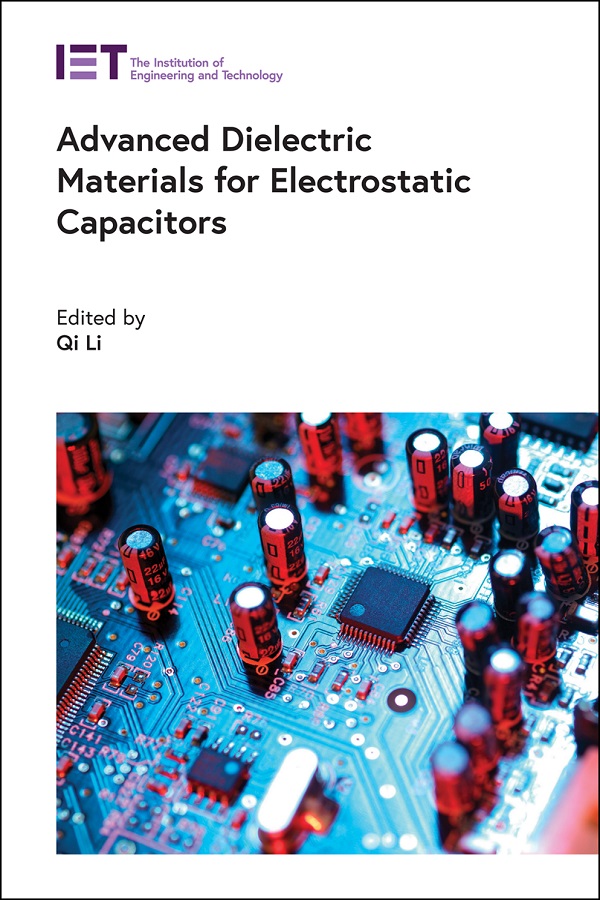- Agricultural Engineering and Technology
- Applied Physics
- Built Environment
- Computing and Networks
- Control, Robotics and Sensors
- Electrical Regulations
- Electromagnetics and Radar
- Energy Engineering
- Healthcare Technologies
- History and Management of Technology
- IET Codes and Guidance
- Manufacturing
- Materials, Circuits and Devices
- Model Forms
- Security
- Telecommunications
- Transportation

Advanced Dielectric Materials for Electrostatic Capacitors
Edited by Qi Li
Capacitors are passive electrical components that store energy in an electric field. Applications include electric power conditioning, signal processing, motor starting, and energy storage. The maximum charge a capacitor can hold largely depends on the dielectric material inside. That material is the enabler for the performance. Ongoing development in fields such as high-power electronics, renewable energy, hybrid electric vehicles and electric aircraft, is posing an urgent need for more advanced electrostatic capacitor technology.
This book for researchers in industry and academia provides an overview of key dielectric materials for capacitor technology. It covers preparation and characterization of state-of-the art dielectric materials including ceramics, polymers and polymer nanocomposites, for the most popular applications including energy storage, microwave communication and multi-layer ceramic capacitors.
The book begins with an introduction to electrostatic capacitor technology, then goes on to cover the following topics: techniques for capacitor dielectrics characterization; dielectric polymers and dielectric metamaterials for high energy capacitors; polymer/nanofiller composites; high-temperature polymer-based dielectrics for electrostatic energy storage; design and simulations of capacitor dielectrics by phase-field computations; rational design on polymer dielectrics; inorganic dielectrics for high-energy-density capacitors; ceramic dielectrics for microwave communication; ceramic dielectrics for MLCCs; and finally two chapters on future prospects for polymers and ceramics.
About the Editors
Qi Li is an Associate Professor of Electrical Engineering at Tsinghua University, Beijing, China. His research interests focus on nanodielectrics for energy applications. He was the recipient of the MRS (Materials Research Society) Postdoctoral Award in 2016, the IEEE Caixin Sun and Stan Grzybowski Young Professional Achievement Award in 2018, and the National Natural Science Fund for Excellent Young Scholars in 2019. He serves as an editorial member of IET Nanodielectrics. He is a member of the Professional Committee of Dielectric Polymer Composite Materials and Applications, Composite Materials Association of China, and a member of the Professional Committee of High Voltage, Beijing Electrical Engineering Association. He is an IEEE Senior Member, a Senior Member of the China Electrotechnical Society and he is also a member of the IET and MRS.
Publication Year: 2020
Pages: 448
ISBN-13: 978-1-78561-988-5
Format: HBK
Editors: Qi Li
